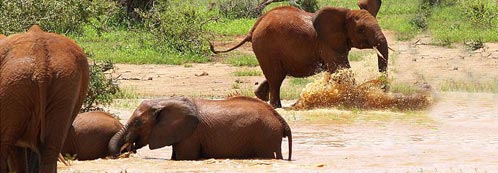Field Notes
January - April 2020
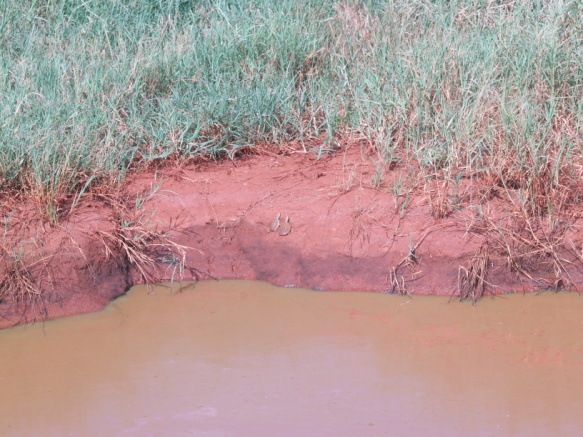
It was hot and humid with heavy rains between January and April in the bull area. Many plants typically produce leaves during the rains and shed their leaves a month after the rains have stopped. But when the rains started last October and continued through April many plants including Commiphora, Bauhinia and Delonix produced leaves and shed them three times in seven months. In the bull area, most waterholes were small lakes. When the waterholes are full, tortoises are often on the bank basking in the sun. With the rains, butterflies, termites and dragonflies seemed to be everywhere. Migratory birds left the bull area in mid-April: Barn Swallows, Steppe Eagles and Eurasian Rollers.
Bulls
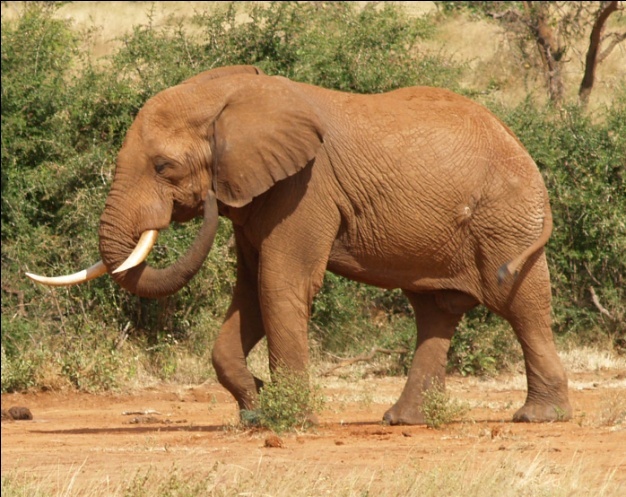
Most bulls were with family groups or alone: Swift, Moonlight, Quark, Oort and Pemba. Breeze and Kilo were with their natal group; not yet ready to be on their own or join a bull group. When I found Pemba, id-2015, during the rains in mid-April he was in musth, alone feeding. Over the next two hours he joined a family of six, split from this family, joined another family, then he headed west alone where Oort and a 15 year old bull joined him. Pemba has been in musth at the same time during the rains in the past four year. In late April, Saturn (photo right, id-2010), was not in musth, but had similar behavioral patterns to Pemba. During four hours, he joined and split from five different families: Heloise, Lya, Vanilla, Summer and Savanna.
Families
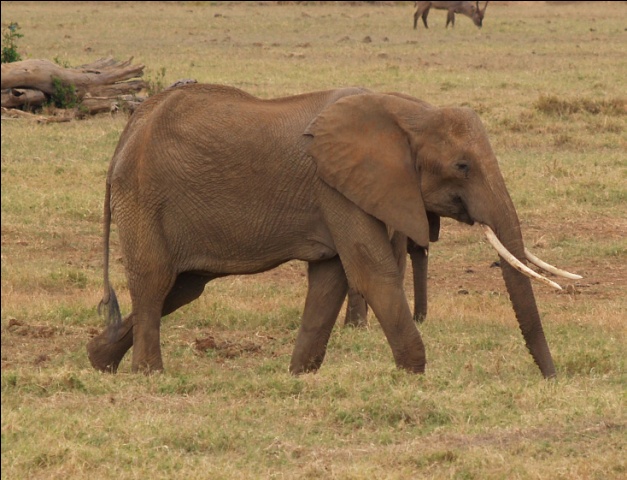
During the past four months, almost all of the known families (mother & offspring) were with their bond group or aggregated with other families: Summer and Savanna, Bermuda, Crescent, Heloise and Teak. Most of the aggregations had two or more bulls, 30-40 years old, with them. In most of the family groups, there were two to three newborns. In one aggregation of 68 individuals, I counted eight calves between one and two months old. It was a challenge to concentrate on id's when the calves were busy chasing butterflies or birds and attacking bushes. This was one of those times, data had to wait so I could just watch. Summer, C.T., and Teak had a calf one-two months old; black hair on their forehead, trunk and back. In late April, Lya (photo left, id-2009) with her male calf were with Vanilla and her calves (male and female) resting in the shade of a Delonix and a 45-year-old unknown bull.
May - August 2020
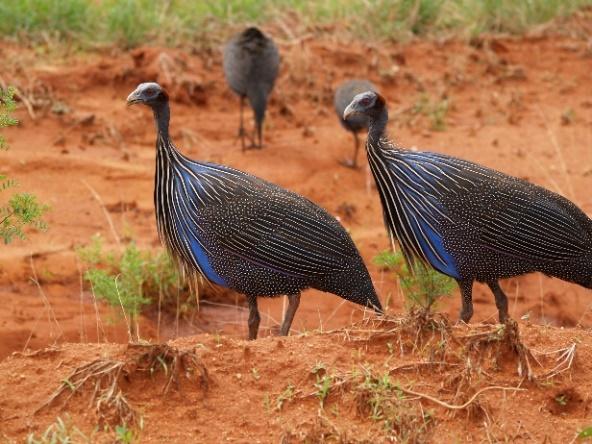
May was hot and humid with green vegetation in the bull area. Since there were few tourist vehicles in the park, many animals used the roads as resting spots or to travel to and from feeding areas: Eland, Fringed-eared Oryx, Gazelle, Zebra and Vulturine Guineafowl (photo left). Sadly, there were wide-spread fires in Tsavo between May and August and the air was saturated with smoke. In many areas the lush vegetation was destroyed. In July there were several storm but the vegetation remained dry. August was cold and windy with dry vegetation, but many Acacias starting producing white or yellow flowers. A contrast to the surrounding dry grass, shrubs and other trees.
Bulls
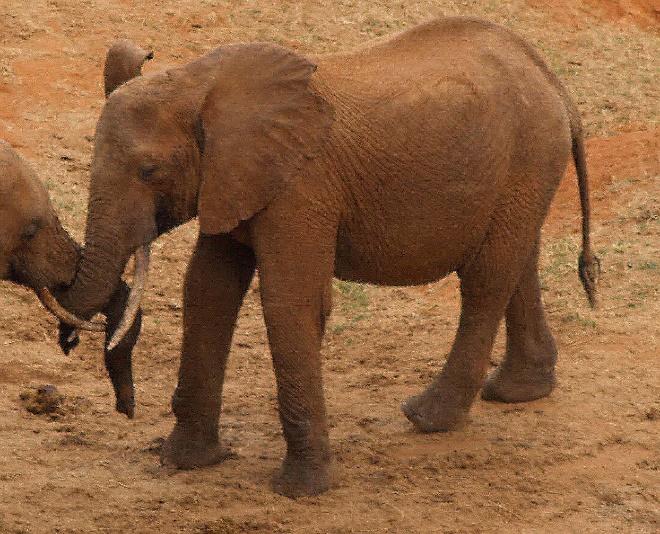
Between May and August most bulls were with other bulls in small groups (Moonlight photo right) or with families and rarely alone. Java, Kilo and Breeze, all young bulls are starting to spend less time with their natal family; joining bull groups or families. These young bulls were often in the front of the group as they moved through the bush or travelling to a waterhole; a common behavior of young bulls. They are also typically the last to leave a waterhole when a family moves away, returning to the bush to feed or rest. Breeze (10-12 years old) continues to show signs of going independent. I found him once with his mother (B2) and siblings, twice with Summer and Savana and once with Spring's family. In late June, Rasputin (id-2004) was in musth, with Nola's family and five 20-30 year old bulls. He was guarding a 15 year old female, chasing away any bull that approached.
Families
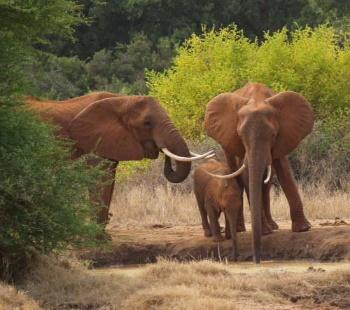
Between May and July families aggregated in groups of 30 to 50 individuals: Skye, Birch, Lya, Nola and Nutmeg. Most groups had at least one bull 30 years and older with them. In June Spring (splayed tusks, photo left) and her offspring were with two other families. Two days later she was with a different family and Breeze. The next day she was with one adult female and three juveniles but Breeze was not with them. In Tsavo, families rarely have the same number of individuals at each sighting. Groups merge, split or young males join for a few days or hours. Summer's male calf, born in January, stayed close to his mother during his first few month. When I saw the family in July, there was a young male calf in the family but not close to Summer. The longer I watched the family I realized this calf was hers and his behavior had changed; he stayed close to a young female or another adult female but returned to Summer to suckle.
September - December 2020
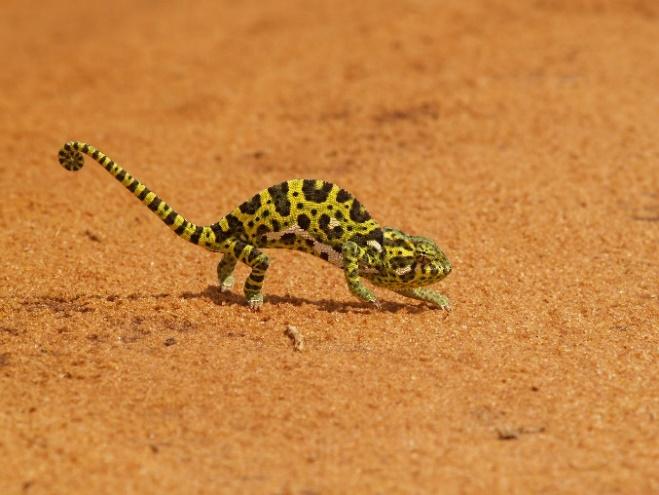
September and most of October were cool and dry. The vegetation in the west-central bull area was destroyed by fires in September. Heavy rains started in late October. November and December were hot and humid with thick vegetation. The first migratory bird to arrive in Tsavo was a Steppe Eagle in late October. In November, Eurasian Rollers, Harriers, large flocks of Barn Swallows and White Storks arrived. Several times during the rains hundreds of termites emerged from the soil attracting birds, lizards and baboons. In December, large flocks of Chestnut Weavers and Red-Billed Quelea arrived in the bull area; swooping over the heads of elephants and buffalo. In December most of the grass that burned in September had grown back, but many shrubs remained dry and leafless.
Bulls
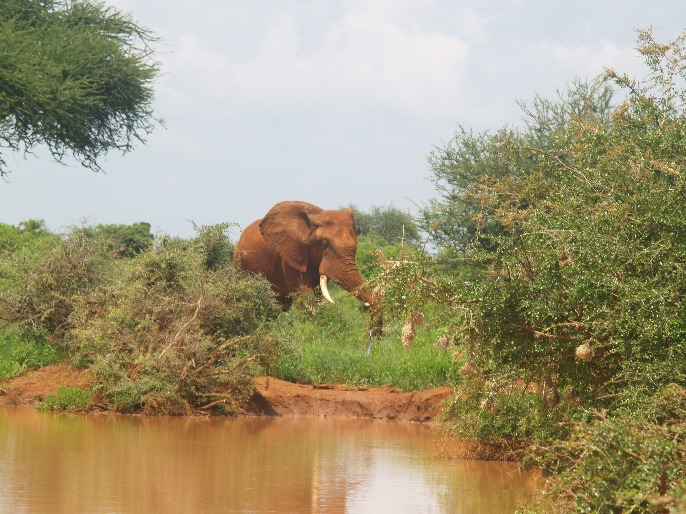
Before the rains in late October, many bulls in the southern bull area were in small bull groups or with families. In November, Swift and Wishbone were with other young bulls feeding and following the trail of a family. Once the vegetation became lush and waterholes were full, groups of 5-6 young males formed a group following families and stopping to spar. This behavior is common for young bulls not yet ready to be on their own. Breeze, B2's son, is spending more time away from his family, not alone but joining other families. In December he was with C.T.'s family, then moved away and joined five young bulls traveling west. Two days later he was with Summer and Savanna and four other young males feeding.
Families
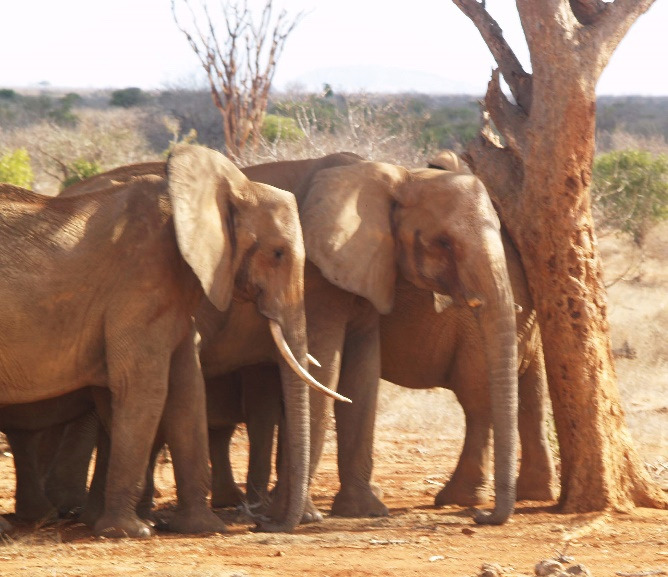
During September and October families were relatively small. In November, Summer, Savanna and Peony were together as were Spring and Maple. When the rains started many families came together creating aggregation of 50 individuals. Nola and Nutmeg (two of the original females identified in the 1990's) were in one aggregation. Clover and Spice (photo left) were in an aggregation of 30 individuals. They were first sighted in 2017 in the center of the park (25km east of the Hills area). Summers's male calf born in January was healthy in December. As they were feeding, large flocks of Quelea were flying in wave's overhead, alarming Summer's calf. C.T.'s family was resting under a tree nearby. C.T.'s calf born in March joined Summer's calf and together they charged the birds; a common calf behavior.
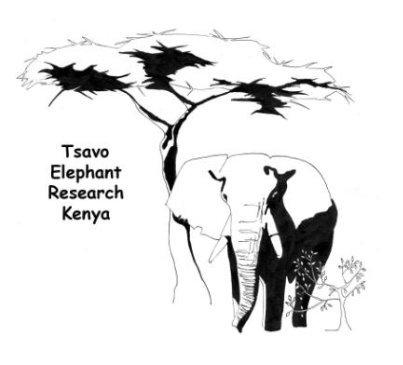
Tsavo Elephant Research Needs Your Help.
Donations are needed to continue this 30+ year field study
and support a Kenyan research field team.
We monitor the behaviors of Tsavo known bulls and families:
group dynamics, offspring & survival, musth cycles and habitat use.
Please click here or on the donate button
to send your donation.
Thank you!
Barbara
